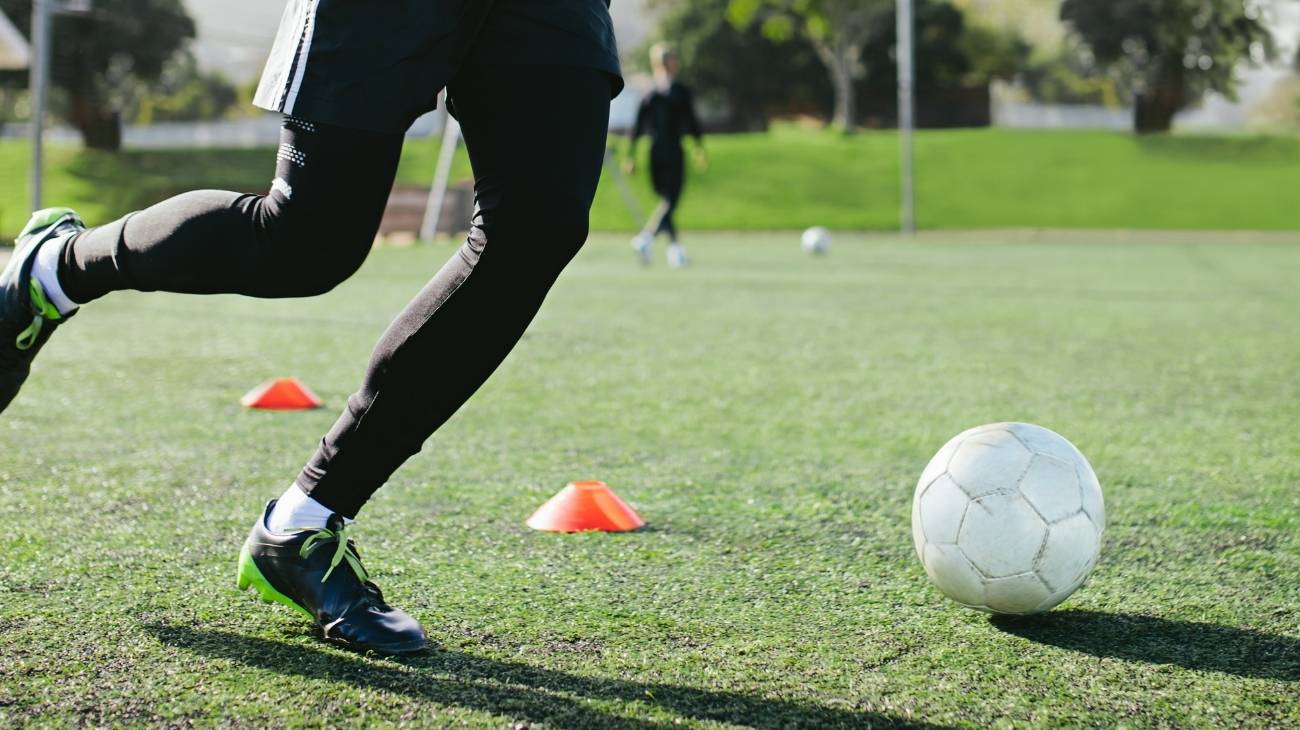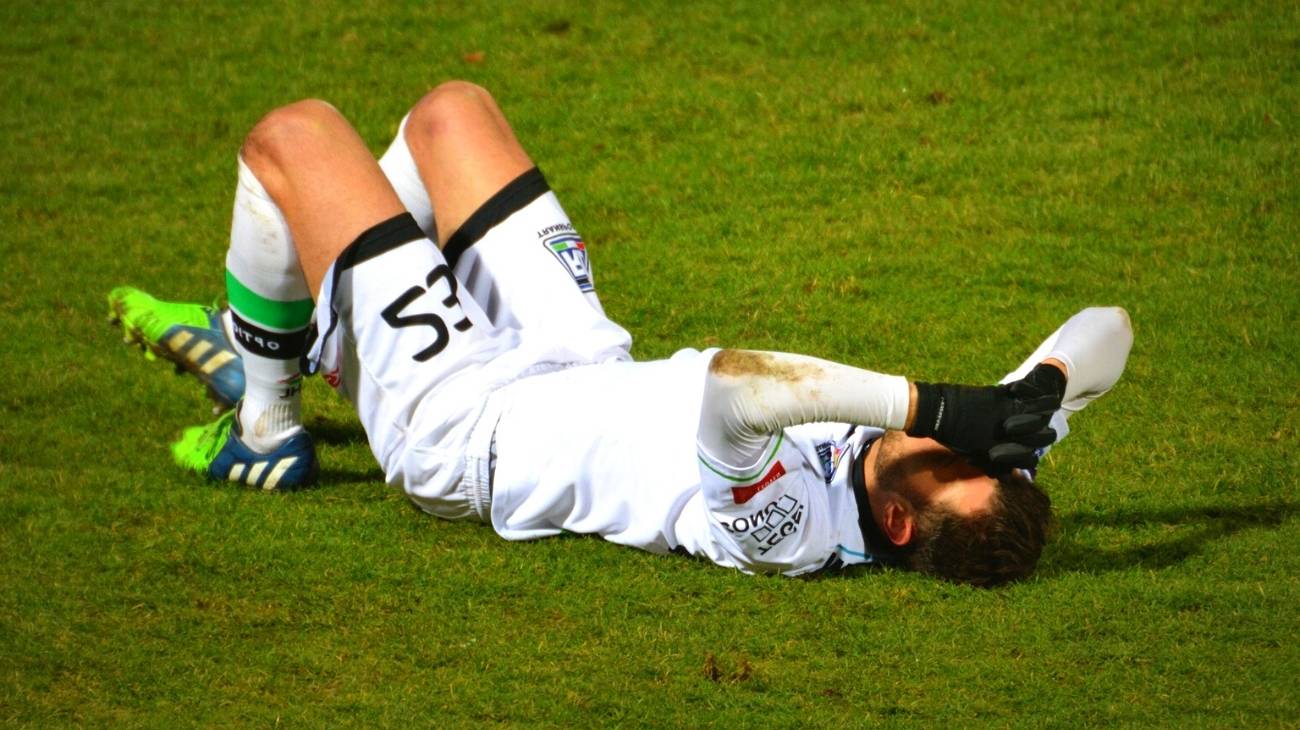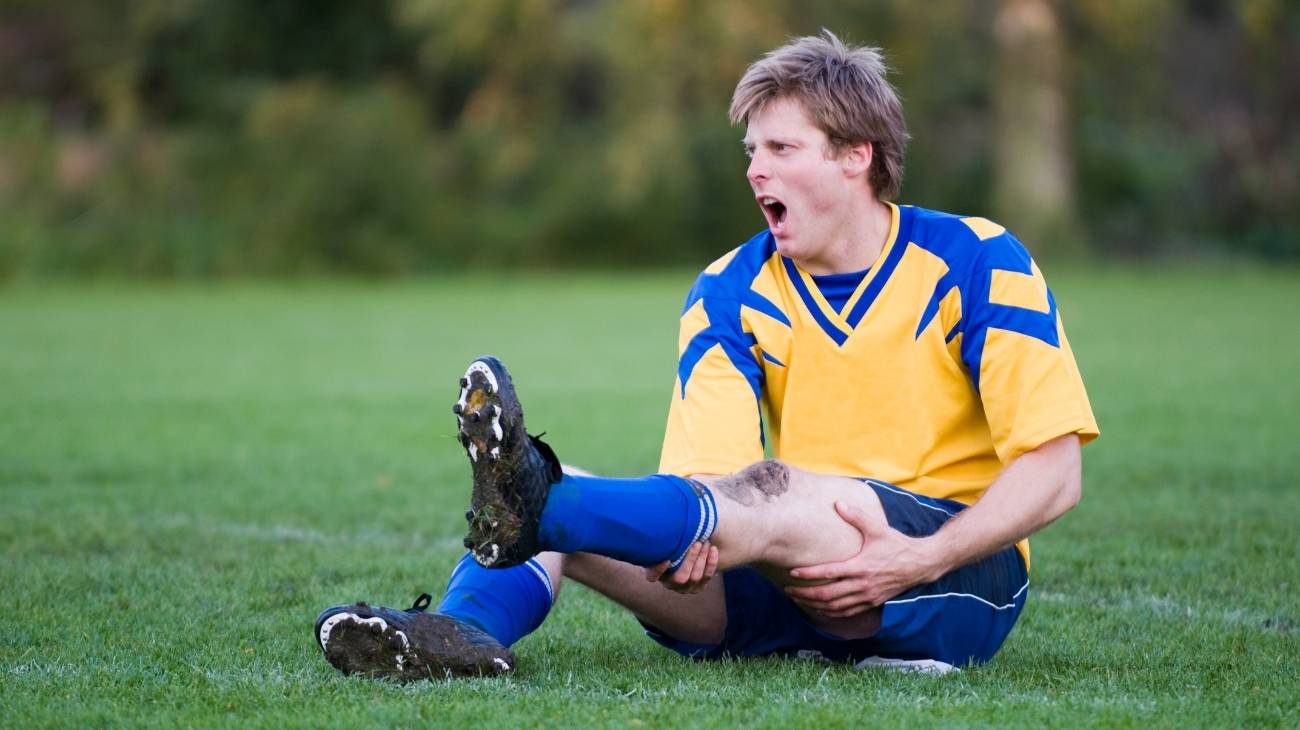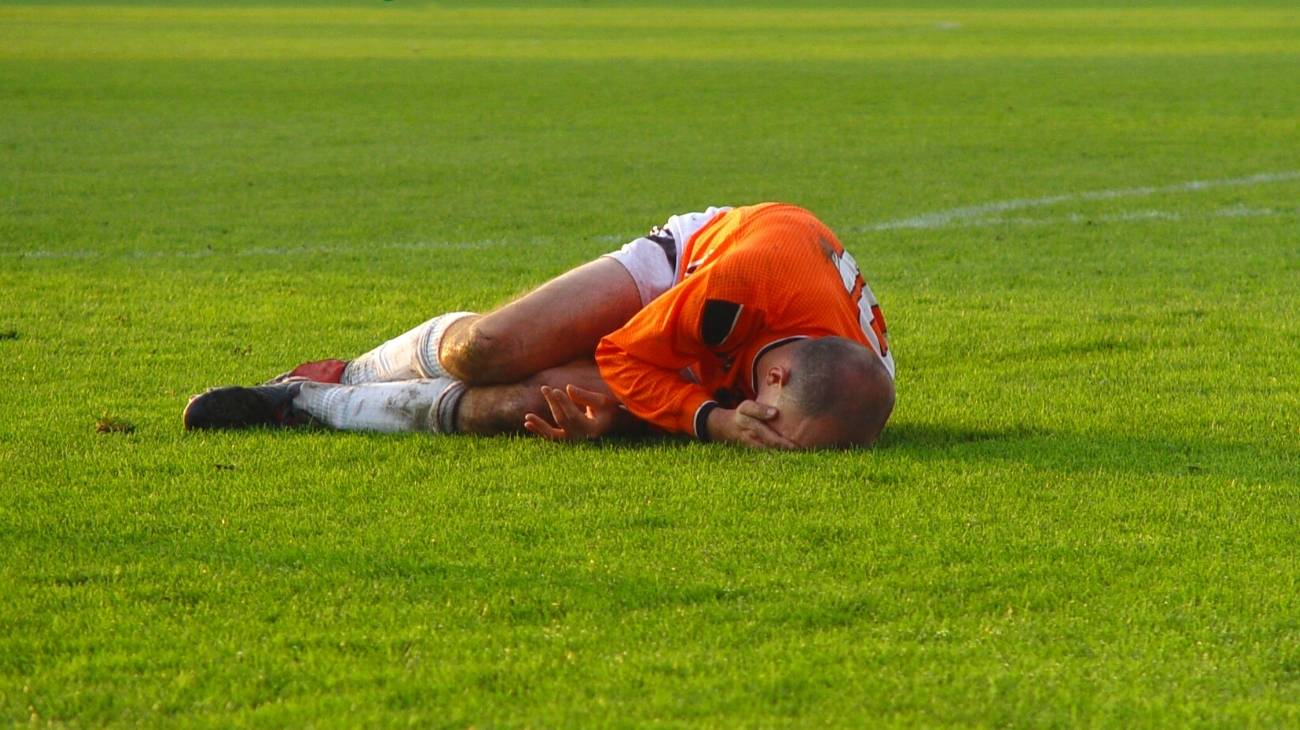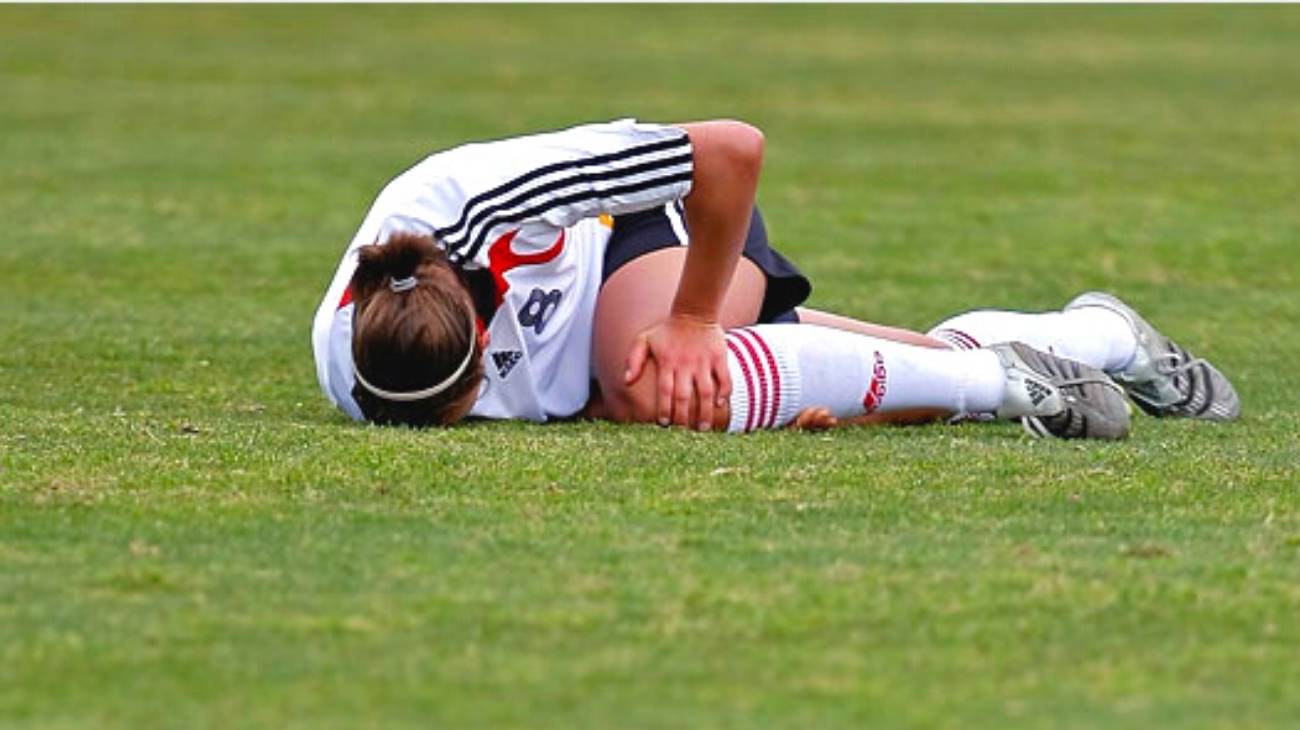The hip is one of the most necessary joints for a football player, especially for those who love dribbling, as it is the secret of the feints to deceive the opponent and force him to give that millimetric movement that allows you to make a difference in order to overcome him.
For this reason, both the hip and abductor muscles must be strengthened to the maximum, otherwise they will not be able to withstand the demands of this sport. Here are the most common types of hip injuries in football players.
What are the most common types of hip injuries when playing football?
The hip is a joint formed by the femur bone and the pelvis, which in turn is made up of three bones: the ilium, ischium and pubis. The femoral head articulates in the acetabular fossa, which is located in the coxal bone. It allows us to perform flexion, extension, adduction, internal and external rotation movements.
Among the most common injuries that usually occur in football players are:
Pubalgia
Also called dynamic osteopathy of the pubis, it is an ailment located in the inguino-pubic area or in the lower abdomen of the athlete. It presents as severe pain that usually radiates towards the abdominal region and the abductor muscles.
It usually occurs due to muscular over-exertion by repetitive movements associated with football training, causing an overload in this set of muscles that form the pubis, as well as in situations of biomechanical and structural imbalances, inadequate practice, consecutive changes of terrain and hard or unsuitable terrain for this type of sports practice.
Labral injuries
These are a group of injuries that can range from strains to tears in the joint between the coccyx and the femur, thus limiting the stability of the hip. Its most specific symptom is groin pain that may radiate down the leg. It is very rare in football players, but the possibility of suffering from it during a match will always be latent.
They can occur due to trauma caused by a strong tackle by an opponent, by underlying pathologies affecting the hip such as osteoarthritis or osteoporosis, or by a fall after a jump to dispute an aerial ball. This type of injury will be treated according to the phase in which it is found, since in an initial phase there is usually a quick recovery with physiotherapy and pain management with painkillers or anti-inflammatory drugs, but in more serious or more advanced injuries it is usually treated surgically where a hip arthroscopy is performed.
Hip bursitis
When trauma occurs due to falls during play or constant collisions to contest split balls against an opponent, inflammation of the bursa surrounding the hip joint can occur at the hip, this type of injury is known as trochanteric bursitis or trochanteritis. This type of injury is quite common in goalkeepers, as they often fall to the ground in their dives to make saves, accumulating wear and tear and stress on the joint.
Pain usually occurs in the lateral part of the hip. Treatment is based on anti-inflammatory drugs, but if the discomfort becomes permanent, the application of platelet-rich plasma to the area or surgery is often recommended.
Osteoarthritis of the hip in young people
It presents as a deformation due to wear and tear of one of the bones of the joint, this usually occurs in young people as a result of trauma during a match, although the reality is that it is quite unusual for it to occur, unless it is an elderly person over the age of 40, something perfectly possible in amateurs where the demands are less demanding.
It manifests itself with pain in the groin, but this discomfort can progress to loss of flexibility and functionality of the hip joint, and at this point surgical intervention is necessary for the implantation of a prosthesis.
Best products for the recovery of hip and pubic injuries in football players
Bestseller
-
Microwave Wheat Bag for Back Pain Relief (Extra Large) (Hearts)
£24,95 -
Microwave Wheat Bag for Back Pain Relief (Extra Large) (Oxford)
£24,95 -
Microwave Wheat Bag for Back Pain Relief (Extra Large) (Sport)
£24,95 -
Microwave Wheat Bag for Neck & Shoulder Pain Relief (Hearts)
£24,95 -
Microwave Wheat Bag for Neck & Shoulder Pain Relief (Oxford)
£24,95 -
Microwave Wheat Bag for Neck & Shoulder Pain Relief (Sport)
£24,95 -
Microwaveable Wheat Bag for Pain Relief (Hearts)
£20,95 -
Microwaveable Wheat Bag for Pain Relief (Oxford)
£20,95 -
Microwaveable Wheat Bag for Pain Relief (Sport)
£20,95 -
Wheat Bag for Microwave Classic Bottle Shaped (Hearts)
£20,95 -
Wheat Bag for Microwave Classic Bottle Shaped (Oxford)
£20,95 -
Wheat Bag for Microwave Classic Bottle Shaped (Sport)
£20,95
-
Back Support Belt (Black)
£39,95 -
Back Support Belt (Green)
£39,95 -
Back Support Belt (Pink)
£39,95 -
Ice Massage Roller Ball (Black)
£34,95 -
Ice Massage Roller Ball (Green)
£34,95 -
Ice Massage Roller Ball (Pink)
£34,95 -
Sacroiliac Support Belt (Black)
£24,95 -
Sacroiliac Support Belt (Green)
£24,95 -
Sacroiliac Support Belt (Pink)
£24,95 -
Soft Density Foam Roller for Recovery (Black)
£34,95 -
Soft Density Foam Roller for Recovery (Green)
£34,95 -
Soft Density Foam Roller for Recovery (Pink)
£34,95
How to apply the RICE therapy to treat pubic and hip injuries in football players?
When an injury occurs in an athlete, the use of the RICE therapy is stipulated, which is a series of first aid actions to be carried out in a timely and specific manner. The PRICE therapy is an update of the RICE therapy, but the latter is better known.
- Protection: in this step, the hip is immobilised, which can only be done by keeping the player lying face up or face down if the pain is in the lumbar region.
- Rest: after suffering a trauma to the hip, it is best not to move for a while until the pain has passed or a doctor indicates it.
- Ice: This step is intended to reduce and stop the inflammatory process after suffering a traumatic injury, or even to soothe the pain generated by the injury. It should be placed on the area of the hip where the pain is most acute or where the inflammation is most pronounced.
- Compression: Compression is intended to prevent the inflammation from progressing, but never to reduce it, as too much compression can cause tissue damage or even ligament damage. For this area, garments such as belts or girdles are often used.
- Elevation: elevating the limb helps the venous return of blood to the area, thus preventing oedema formation and even reducing pain. What you should do is lie on your stomach and place a pillow on your pelvis so that your hip is raised above the level of your heart.
References
- Rodriguez, C., Miguel, A., Lima, H., & Heinrichs, K. (2001). Osteitis pubis syndrome in the professional soccer athlete: a case report. Journal of athletic training, 36(4), 437. https://www.ncbi.nlm.nih.gov/pmc/articles/PMC155442/
- Cunningham, P. M., Brennan, D., O'Connell, M., MacMahon, P., O'Neill, P., & Eustace, S. (2007). Patterns of bone and soft-tissue injury at the symphysis pubis in soccer players: observations at MRI. American Journal of Roentgenology, 188(3), W291-W296. https://www.ajronline.org/doi/full/10.2214/AJR.06.0051
- Wollin, M., & Lovell, G. (2006). Osteitis pubis in four young football players: a case series demonstrating successful rehabilitation. Physical therapy in sport, 7(3), 153-160. https://www.sciencedirect.com/science/article/abs/pii/S1466853X06000368
- Werner, J., Hägglund, M., Waldén, M., & Ekstrand, J. (2009). UEFA injury study: a prospective study of hip and groin injuries in professional football over seven consecutive seasons. British journal of sports medicine, 43(13), 1036-1040. https://bjsm.bmj.com/content/43/13/1036.short
- Bencardino, J. T., & Mellado, J. M. (2005). Hamstring injuries of the hip. Magnetic Resonance Imaging Clinics, 13(4), 677-690. https://www.mri.theclinics.com/article/S1064-9689(05)00095-4/fulltext
- Inklaar, H. (1994). Soccer injuries: I: incidence and severity. Sports medicine, 18, 55-73. https://link.springer.com/article/10.2165/00007256-199418010-00006
- Inklaar, H. (1994). Soccer Injuries: II: Aetiology and Prevention. Sports medicine, 18, 81-93. https://link.springer.com/article/10.2165/00007256-199418020-00002
- Ekstrand, J., & Gillquist, J. (1983). Soccer injuries and their mechanisms: a prospective study. Medicine and science in sports and exercise, 15(3), 267-270. https://europepmc.org/article/med/6621313
- Dvorak, J., & Junge, A. (2000). Football injuries and physical symptoms. The American journal of sports medicine, 28(5_suppl), 3-9. https://pubmed.ncbi.nlm.nih.gov/11032101/
- Faude, O., Rößler, R., & Junge, A. (2013). Football injuries in children and adolescent players: are there clues for prevention?. Sports medicine, 43, 819-837. https://link.springer.com/article/10.1007/s40279-013-0061-x



























































